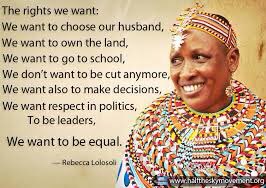This thread is about uniquely gender structured societies in Africa. It’s not about who “rules” , but more so highlighting places with fearless women, & men who are not hellbent on their masculinity.
Male beauty standards, female leaders & “women only villages”... let’s explore
Male beauty standards, female leaders & “women only villages”... let’s explore
1] Tuareg people are approx. 2m in population. They live across the Sahara desert including North African countries such as Mali  https://abs.twimg.com/emoji/v2/... draggable="false" alt="🇲🇱" title="Flagge von Mali" aria-label="Emoji: Flagge von Mali"> Niger
https://abs.twimg.com/emoji/v2/... draggable="false" alt="🇲🇱" title="Flagge von Mali" aria-label="Emoji: Flagge von Mali"> Niger  https://abs.twimg.com/emoji/v2/... draggable="false" alt="🇳🇪" title="Flagge von Niger" aria-label="Emoji: Flagge von Niger"> Libya
https://abs.twimg.com/emoji/v2/... draggable="false" alt="🇳🇪" title="Flagge von Niger" aria-label="Emoji: Flagge von Niger"> Libya  https://abs.twimg.com/emoji/v2/... draggable="false" alt="🇱🇾" title="Flagge von Libyen" aria-label="Emoji: Flagge von Libyen"> Algeria
https://abs.twimg.com/emoji/v2/... draggable="false" alt="🇱🇾" title="Flagge von Libyen" aria-label="Emoji: Flagge von Libyen"> Algeria  https://abs.twimg.com/emoji/v2/... draggable="false" alt="🇩🇿" title="Flagge von Algerien" aria-label="Emoji: Flagge von Algerien"> Chad
https://abs.twimg.com/emoji/v2/... draggable="false" alt="🇩🇿" title="Flagge von Algerien" aria-label="Emoji: Flagge von Algerien"> Chad  https://abs.twimg.com/emoji/v2/... draggable="false" alt="🇹🇩" title="Flagge von Tschad" aria-label="Emoji: Flagge von Tschad">. They are part of the Berber ethnic group.
https://abs.twimg.com/emoji/v2/... draggable="false" alt="🇹🇩" title="Flagge von Tschad" aria-label="Emoji: Flagge von Tschad">. They are part of the Berber ethnic group.
In this culture, only men wear a blue veil aka “allichu” (1/3)
In this culture, only men wear a blue veil aka “allichu” (1/3)
(2/3) while women are free to show their face. The men begin wearing the veil at 25 years old, and are veiled up to their eyes. They are rarely unveiled.
The men are veiled when asleep, travelling alone, eating and in the presence of women. Women simply wear a head cloth (cont)
The men are veiled when asleep, travelling alone, eating and in the presence of women. Women simply wear a head cloth (cont)
(3/3)... The veil and dye is actually from Nigeria  https://abs.twimg.com/emoji/v2/... draggable="false" alt="🇳🇬" title="Flagge von Nigeria" aria-label="Emoji: Flagge von Nigeria"> . Merchants travel for up to 6 months for about 1000 miles south to reach Nigerian towns of Tano and Sokoto to trade for the allichu cloth.
https://abs.twimg.com/emoji/v2/... draggable="false" alt="🇳🇬" title="Flagge von Nigeria" aria-label="Emoji: Flagge von Nigeria"> . Merchants travel for up to 6 months for about 1000 miles south to reach Nigerian towns of Tano and Sokoto to trade for the allichu cloth.
The veil also protects from desert sun & sand. And is said to waive off bad spirits.
The veil also protects from desert sun & sand. And is said to waive off bad spirits.
2] The Bodi Tribe & the Ka’el obesity pageant.
So, every year around June-July, the Bodi celebrate their New Year, with a fascinating show of pageantry. You guessed it, men contestants only!
The men live in isolation for 6 months to prepare to compete as the “fattest man” (1/3)
So, every year around June-July, the Bodi celebrate their New Year, with a fascinating show of pageantry. You guessed it, men contestants only!
The men live in isolation for 6 months to prepare to compete as the “fattest man” (1/3)
(2/3)... The unmarried men, feed on fresh cows milk and cows blood (in a mixture) daily, for the entire period of 6 months in hopes to gain excess weight. They are not permitted to do any form of physical activity, including sexual intercourse. They just sit under the sun in huts
(3/3)... on the day of the competition, each of the 14 clans of the Bodi Tribe present their overweight unmarried male, for the rest of the community to judge.
The winner takes huge glory, fame, and it increases his chances of finding a wife.
The winner takes huge glory, fame, and it increases his chances of finding a wife.
3] Wodaabe Courtship in Niger  https://abs.twimg.com/emoji/v2/... draggable="false" alt="🇳🇪" title="Flagge von Niger" aria-label="Emoji: Flagge von Niger">
https://abs.twimg.com/emoji/v2/... draggable="false" alt="🇳🇪" title="Flagge von Niger" aria-label="Emoji: Flagge von Niger">
Similar to the Bodi tribe, there’s a competition for the men to participate in. A beauty pageant https://abs.twimg.com/emoji/v2/... draggable="false" alt="💅🏾" title="Nagellack (durchschnittlich dunkler Hautton)" aria-label="Emoji: Nagellack (durchschnittlich dunkler Hautton)">
https://abs.twimg.com/emoji/v2/... draggable="false" alt="💅🏾" title="Nagellack (durchschnittlich dunkler Hautton)" aria-label="Emoji: Nagellack (durchschnittlich dunkler Hautton)">
The Guérewol is an annual ritual where men dress up in ornaments & face paint, to gather in lines & sing & dance for marriageable women (1/3)
Similar to the Bodi tribe, there’s a competition for the men to participate in. A beauty pageant
The Guérewol is an annual ritual where men dress up in ornaments & face paint, to gather in lines & sing & dance for marriageable women (1/3)
(2/3)... The Wodaabe prize male beauty standards over women’s. These are, bright eyes and bright teeth. The men often roll their eyes and bare their teeth during the ceremonies to flaunt their sex appeal and appease the women
(3/3)... when a man is attractive among the Wodaabe, he is called “Kayeejo Naawdo” meaning ‘hurting man’ - he is so beautiful, it hurts to look at him.
Men want to be chosen by a woman to marry not for the desire of women, but for higher status and respect from other men
Men want to be chosen by a woman to marry not for the desire of women, but for higher status and respect from other men
4] The San, “independent women”
Found in Namibia https://abs.twimg.com/emoji/v2/... draggable="false" alt="🇳🇦" title="Flagge von Namibia" aria-label="Emoji: Flagge von Namibia"> Botswana
https://abs.twimg.com/emoji/v2/... draggable="false" alt="🇳🇦" title="Flagge von Namibia" aria-label="Emoji: Flagge von Namibia"> Botswana  https://abs.twimg.com/emoji/v2/... draggable="false" alt="🇧🇼" title="Flagge von Botsuana" aria-label="Emoji: Flagge von Botsuana"> and Angola
https://abs.twimg.com/emoji/v2/... draggable="false" alt="🇧🇼" title="Flagge von Botsuana" aria-label="Emoji: Flagge von Botsuana"> and Angola  https://abs.twimg.com/emoji/v2/... draggable="false" alt="🇦🇴" title="Flagge von Angola" aria-label="Emoji: Flagge von Angola"> in the Kalahari desert. The San are one of the oldest people on earth, whose hunter-gatherer lifestyle is at risk due to climate change.
https://abs.twimg.com/emoji/v2/... draggable="false" alt="🇦🇴" title="Flagge von Angola" aria-label="Emoji: Flagge von Angola"> in the Kalahari desert. The San are one of the oldest people on earth, whose hunter-gatherer lifestyle is at risk due to climate change.
Women have high status in society as often leaders (1/3)...
Found in Namibia
Women have high status in society as often leaders (1/3)...
(2/3)... leaders of family and households. They are also given ownership of watering holes & foraging areas. This is a great power to hold, in a community where climate change is making it harder to survive, and there is little to no water, and where food can only be hunted for..
(3/3) ... the San women are still responsible for gathering fruit, tubers, berries, bush onions & any other plants that may be of use. They also adopt the role of gathering ostrich eggs to store water in. They are the hunters, mothers, gatherers AND negotiators when necessary! https://abs.twimg.com/emoji/v2/... draggable="false" alt="👏🏾" title="Applaus-Zeichen (durchschnittlich dunkler Hautton)" aria-label="Emoji: Applaus-Zeichen (durchschnittlich dunkler Hautton)">
https://abs.twimg.com/emoji/v2/... draggable="false" alt="👏🏾" title="Applaus-Zeichen (durchschnittlich dunkler Hautton)" aria-label="Emoji: Applaus-Zeichen (durchschnittlich dunkler Hautton)">
5] Umoja Village - “No man’s Land” https://abs.twimg.com/emoji/v2/... draggable="false" alt="🇰🇪" title="Flagge von Kenia" aria-label="Emoji: Flagge von Kenia">
https://abs.twimg.com/emoji/v2/... draggable="false" alt="🇰🇪" title="Flagge von Kenia" aria-label="Emoji: Flagge von Kenia">
Located in Samburu in Northern Kenya , the Umoja Village is aka No Mans Land because frankly, men are banned. The village is home to women who’ve experienced sexual or gender-based violence. “Umoja” in Swahili means “unity”, for women (1/3)
Located in Samburu in Northern Kenya , the Umoja Village is aka No Mans Land because frankly, men are banned. The village is home to women who’ve experienced sexual or gender-based violence. “Umoja” in Swahili means “unity”, for women (1/3)
(2/3)... the village was founded by Rebecca Lolosoli - the village matriarch and a group of 14 other women who were survivors of rape by local British soldiers. The idea came to her as she was in hospital for being attacked by men after speaking about women’s rights.
(3/3)...As occupations, women & children who live in the village show tourists around and teach others about their rights
Now, Umoja’s population has expanded to include any women escaping child marriage, FGM, domestic violence and rape. Which sadly are all Samburu norms.
Now, Umoja’s population has expanded to include any women escaping child marriage, FGM, domestic violence and rape. Which sadly are all Samburu norms.
That’s the end of the thread, hope you enjoyed and learned something new!. I’ve written a blog post with sources for more details on this, you can read it here!: https://www.ssozinha.com/post/5-african-traditions-where-gender-roles-are-reversed">https://www.ssozinha.com/post/5-af...
Interesting to see how flexible gender roles can be in Africa, a place where we’d think they’d be rigid and biased.
Make sure you subscribe to my blog http://ssozinha.com/subscribe ">https://ssozinha.com/subscribe... for more african history content
Make sure you subscribe to my blog http://ssozinha.com/subscribe ">https://ssozinha.com/subscribe... for more african history content

 Read on Twitter
Read on Twitter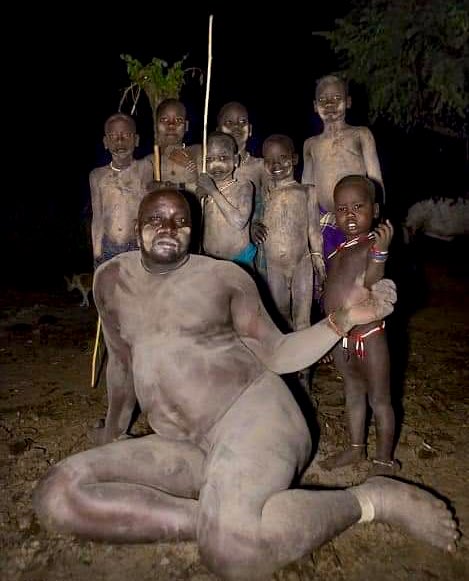
![Flagge von Mali 1] Tuareg people are approx. 2m in population. They live across the Sahara desert including North African countries such as Mali https://abs.twimg.com/emoji/v2/... draggable=](https://pbs.twimg.com/media/EfI2ON5XsAAetO3.jpg) Niger https://abs.twimg.com/emoji/v2/... draggable="false" alt="🇳🇪" title="Flagge von Niger" aria-label="Emoji: Flagge von Niger"> Libya https://abs.twimg.com/emoji/v2/... draggable="false" alt="🇱🇾" title="Flagge von Libyen" aria-label="Emoji: Flagge von Libyen"> Algeria https://abs.twimg.com/emoji/v2/... draggable="false" alt="🇩🇿" title="Flagge von Algerien" aria-label="Emoji: Flagge von Algerien"> Chad https://abs.twimg.com/emoji/v2/... draggable="false" alt="🇹🇩" title="Flagge von Tschad" aria-label="Emoji: Flagge von Tschad">. They are part of the Berber ethnic group.In this culture, only men wear a blue veil aka “allichu” (1/3)" title="1] Tuareg people are approx. 2m in population. They live across the Sahara desert including North African countries such as Mali https://abs.twimg.com/emoji/v2/... draggable="false" alt="🇲🇱" title="Flagge von Mali" aria-label="Emoji: Flagge von Mali"> Niger https://abs.twimg.com/emoji/v2/... draggable="false" alt="🇳🇪" title="Flagge von Niger" aria-label="Emoji: Flagge von Niger"> Libya https://abs.twimg.com/emoji/v2/... draggable="false" alt="🇱🇾" title="Flagge von Libyen" aria-label="Emoji: Flagge von Libyen"> Algeria https://abs.twimg.com/emoji/v2/... draggable="false" alt="🇩🇿" title="Flagge von Algerien" aria-label="Emoji: Flagge von Algerien"> Chad https://abs.twimg.com/emoji/v2/... draggable="false" alt="🇹🇩" title="Flagge von Tschad" aria-label="Emoji: Flagge von Tschad">. They are part of the Berber ethnic group.In this culture, only men wear a blue veil aka “allichu” (1/3)" class="img-responsive" style="max-width:100%;"/>
Niger https://abs.twimg.com/emoji/v2/... draggable="false" alt="🇳🇪" title="Flagge von Niger" aria-label="Emoji: Flagge von Niger"> Libya https://abs.twimg.com/emoji/v2/... draggable="false" alt="🇱🇾" title="Flagge von Libyen" aria-label="Emoji: Flagge von Libyen"> Algeria https://abs.twimg.com/emoji/v2/... draggable="false" alt="🇩🇿" title="Flagge von Algerien" aria-label="Emoji: Flagge von Algerien"> Chad https://abs.twimg.com/emoji/v2/... draggable="false" alt="🇹🇩" title="Flagge von Tschad" aria-label="Emoji: Flagge von Tschad">. They are part of the Berber ethnic group.In this culture, only men wear a blue veil aka “allichu” (1/3)" title="1] Tuareg people are approx. 2m in population. They live across the Sahara desert including North African countries such as Mali https://abs.twimg.com/emoji/v2/... draggable="false" alt="🇲🇱" title="Flagge von Mali" aria-label="Emoji: Flagge von Mali"> Niger https://abs.twimg.com/emoji/v2/... draggable="false" alt="🇳🇪" title="Flagge von Niger" aria-label="Emoji: Flagge von Niger"> Libya https://abs.twimg.com/emoji/v2/... draggable="false" alt="🇱🇾" title="Flagge von Libyen" aria-label="Emoji: Flagge von Libyen"> Algeria https://abs.twimg.com/emoji/v2/... draggable="false" alt="🇩🇿" title="Flagge von Algerien" aria-label="Emoji: Flagge von Algerien"> Chad https://abs.twimg.com/emoji/v2/... draggable="false" alt="🇹🇩" title="Flagge von Tschad" aria-label="Emoji: Flagge von Tschad">. They are part of the Berber ethnic group.In this culture, only men wear a blue veil aka “allichu” (1/3)" class="img-responsive" style="max-width:100%;"/>
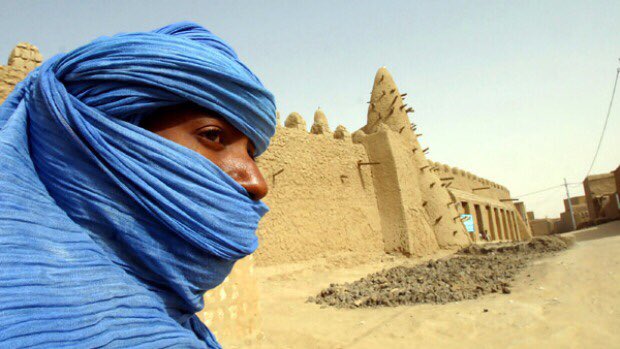

![2] The Bodi Tribe & the Ka’el obesity pageant.So, every year around June-July, the Bodi celebrate their New Year, with a fascinating show of pageantry. You guessed it, men contestants only!The men live in isolation for 6 months to prepare to compete as the “fattest man” (1/3) 2] The Bodi Tribe & the Ka’el obesity pageant.So, every year around June-July, the Bodi celebrate their New Year, with a fascinating show of pageantry. You guessed it, men contestants only!The men live in isolation for 6 months to prepare to compete as the “fattest man” (1/3)](https://pbs.twimg.com/media/EfI2sMxWsAAaexo.jpg)

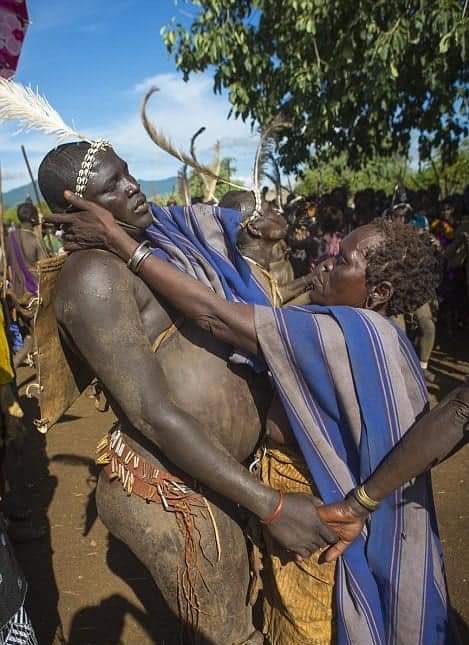

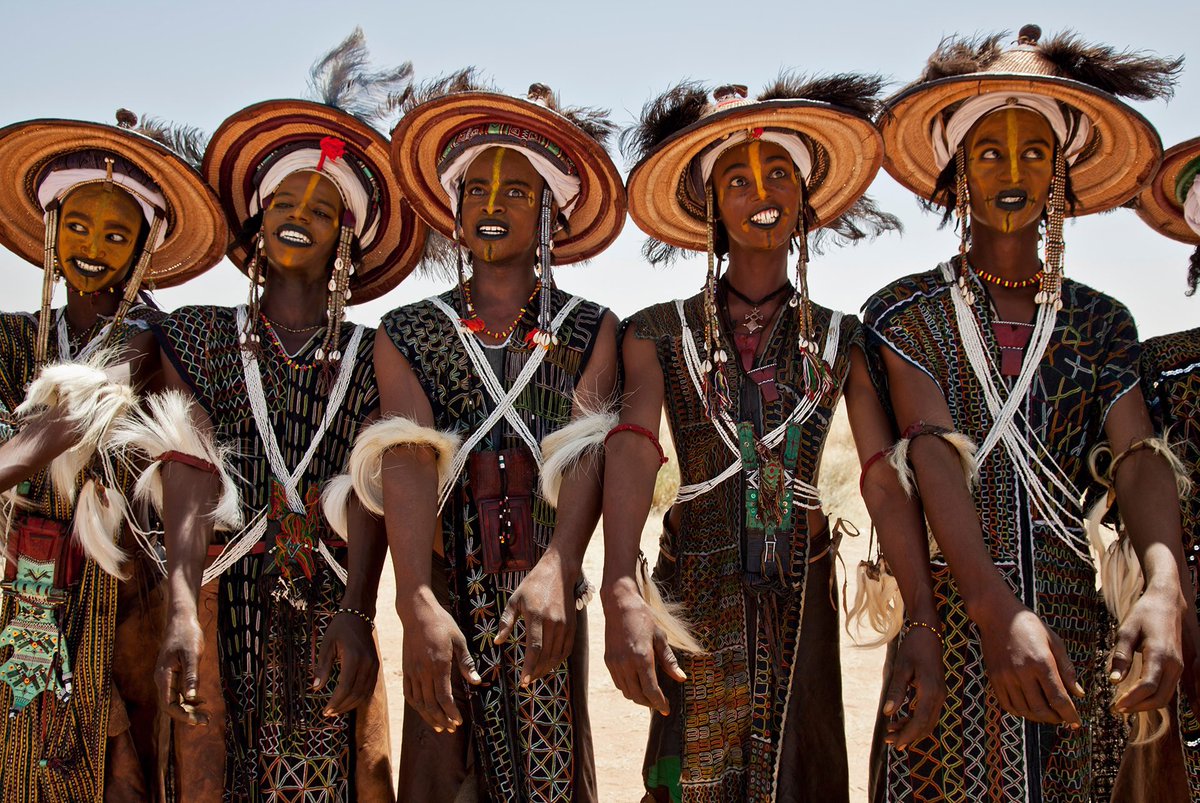
![Flagge von Namibia 4] The San, “independent women”Found in Namibia https://abs.twimg.com/emoji/v2/... draggable=](https://pbs.twimg.com/media/EfI31TXWsAAFiHb.jpg) Botswana https://abs.twimg.com/emoji/v2/... draggable="false" alt="🇧🇼" title="Flagge von Botsuana" aria-label="Emoji: Flagge von Botsuana"> and Angola https://abs.twimg.com/emoji/v2/... draggable="false" alt="🇦🇴" title="Flagge von Angola" aria-label="Emoji: Flagge von Angola"> in the Kalahari desert. The San are one of the oldest people on earth, whose hunter-gatherer lifestyle is at risk due to climate change.Women have high status in society as often leaders (1/3)..." title="4] The San, “independent women”Found in Namibia https://abs.twimg.com/emoji/v2/... draggable="false" alt="🇳🇦" title="Flagge von Namibia" aria-label="Emoji: Flagge von Namibia"> Botswana https://abs.twimg.com/emoji/v2/... draggable="false" alt="🇧🇼" title="Flagge von Botsuana" aria-label="Emoji: Flagge von Botsuana"> and Angola https://abs.twimg.com/emoji/v2/... draggable="false" alt="🇦🇴" title="Flagge von Angola" aria-label="Emoji: Flagge von Angola"> in the Kalahari desert. The San are one of the oldest people on earth, whose hunter-gatherer lifestyle is at risk due to climate change.Women have high status in society as often leaders (1/3)..." class="img-responsive" style="max-width:100%;"/>
Botswana https://abs.twimg.com/emoji/v2/... draggable="false" alt="🇧🇼" title="Flagge von Botsuana" aria-label="Emoji: Flagge von Botsuana"> and Angola https://abs.twimg.com/emoji/v2/... draggable="false" alt="🇦🇴" title="Flagge von Angola" aria-label="Emoji: Flagge von Angola"> in the Kalahari desert. The San are one of the oldest people on earth, whose hunter-gatherer lifestyle is at risk due to climate change.Women have high status in society as often leaders (1/3)..." title="4] The San, “independent women”Found in Namibia https://abs.twimg.com/emoji/v2/... draggable="false" alt="🇳🇦" title="Flagge von Namibia" aria-label="Emoji: Flagge von Namibia"> Botswana https://abs.twimg.com/emoji/v2/... draggable="false" alt="🇧🇼" title="Flagge von Botsuana" aria-label="Emoji: Flagge von Botsuana"> and Angola https://abs.twimg.com/emoji/v2/... draggable="false" alt="🇦🇴" title="Flagge von Angola" aria-label="Emoji: Flagge von Angola"> in the Kalahari desert. The San are one of the oldest people on earth, whose hunter-gatherer lifestyle is at risk due to climate change.Women have high status in society as often leaders (1/3)..." class="img-responsive" style="max-width:100%;"/>
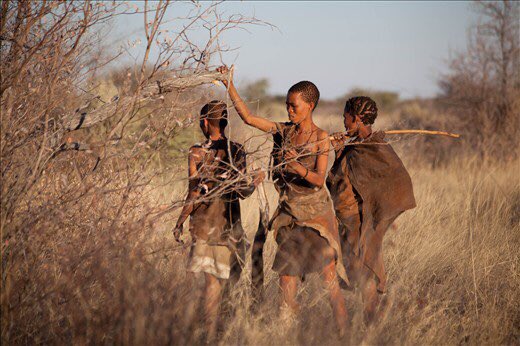
![Flagge von Kenia 5] Umoja Village - “No man’s Land”https://abs.twimg.com/emoji/v2/... draggable=](https://pbs.twimg.com/media/EfI4QeSXoAIPtTt.jpg) Located in Samburu in Northern Kenya , the Umoja Village is aka No Mans Land because frankly, men are banned. The village is home to women who’ve experienced sexual or gender-based violence. “Umoja” in Swahili means “unity”, for women (1/3)" title="5] Umoja Village - “No man’s Land”https://abs.twimg.com/emoji/v2/... draggable="false" alt="🇰🇪" title="Flagge von Kenia" aria-label="Emoji: Flagge von Kenia"> Located in Samburu in Northern Kenya , the Umoja Village is aka No Mans Land because frankly, men are banned. The village is home to women who’ve experienced sexual or gender-based violence. “Umoja” in Swahili means “unity”, for women (1/3)" class="img-responsive" style="max-width:100%;"/>
Located in Samburu in Northern Kenya , the Umoja Village is aka No Mans Land because frankly, men are banned. The village is home to women who’ve experienced sexual or gender-based violence. “Umoja” in Swahili means “unity”, for women (1/3)" title="5] Umoja Village - “No man’s Land”https://abs.twimg.com/emoji/v2/... draggable="false" alt="🇰🇪" title="Flagge von Kenia" aria-label="Emoji: Flagge von Kenia"> Located in Samburu in Northern Kenya , the Umoja Village is aka No Mans Land because frankly, men are banned. The village is home to women who’ve experienced sexual or gender-based violence. “Umoja” in Swahili means “unity”, for women (1/3)" class="img-responsive" style="max-width:100%;"/>
